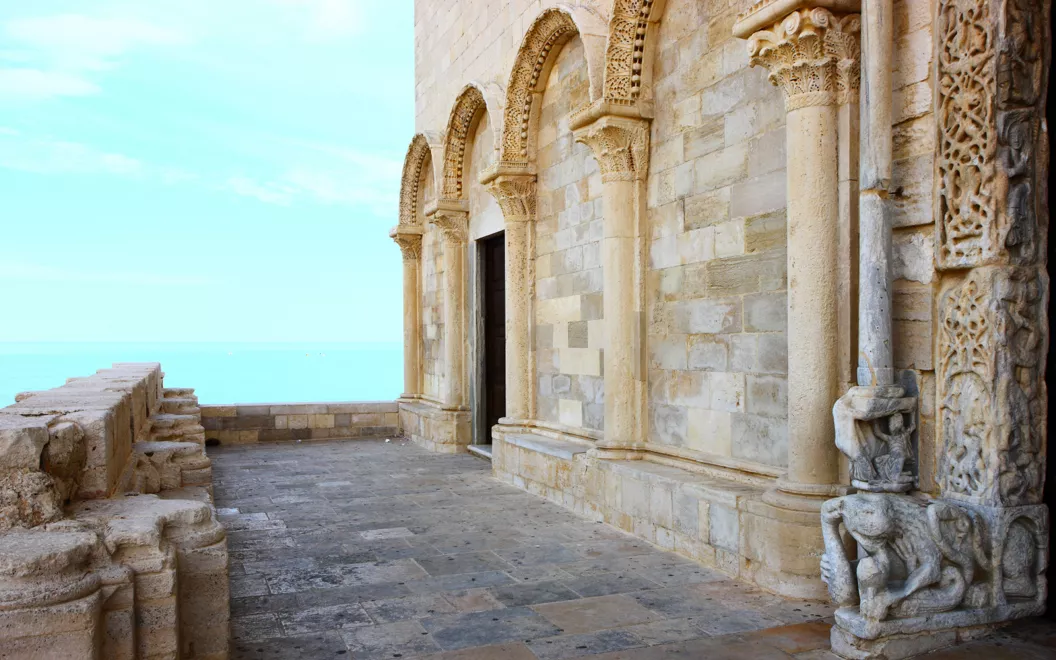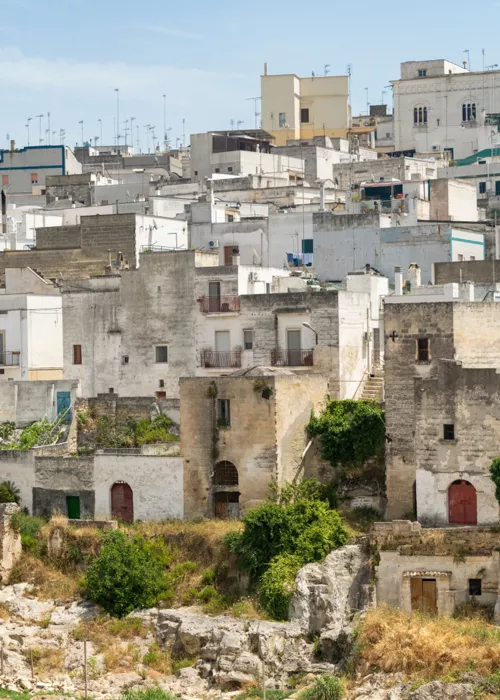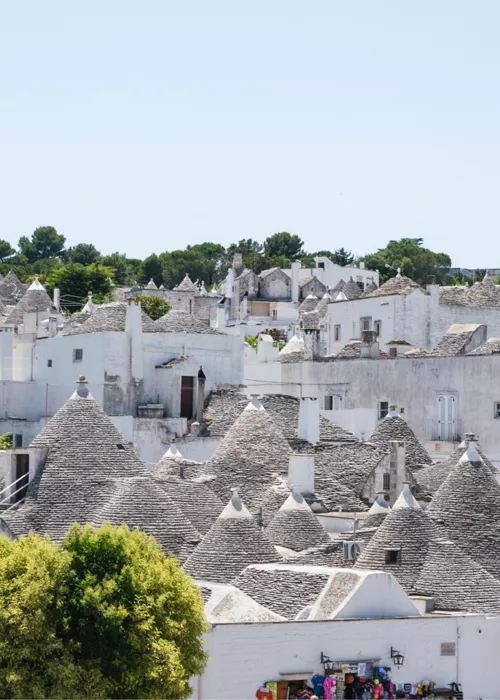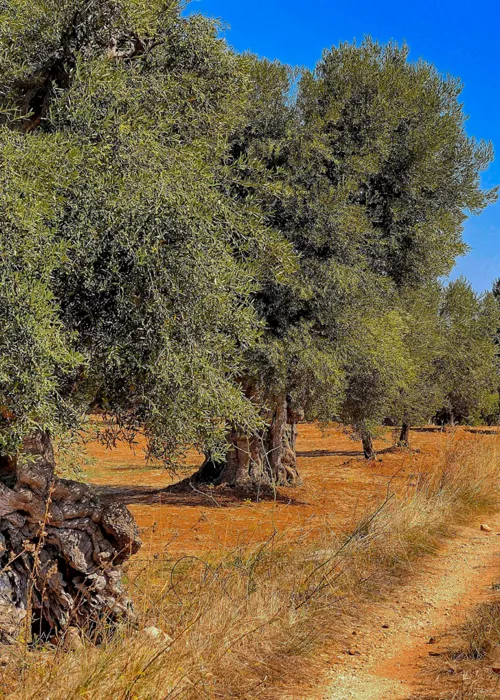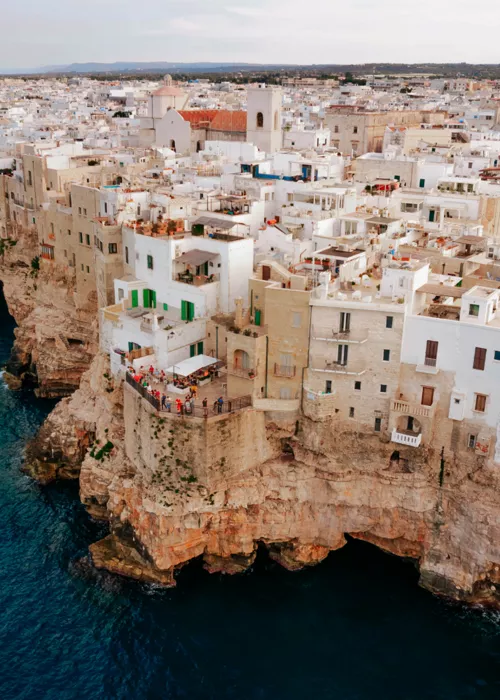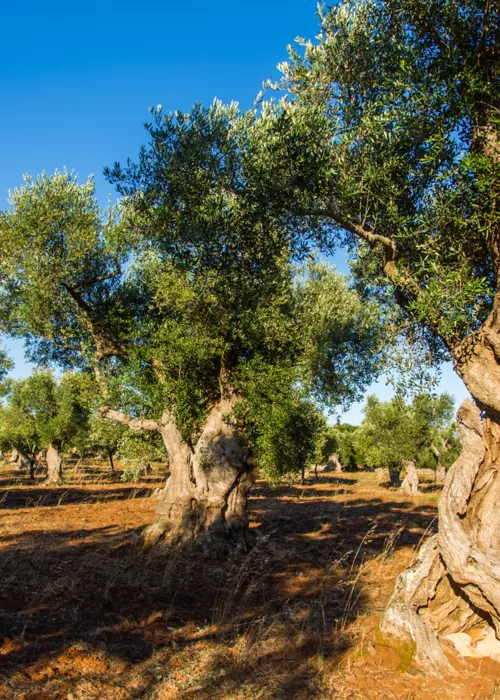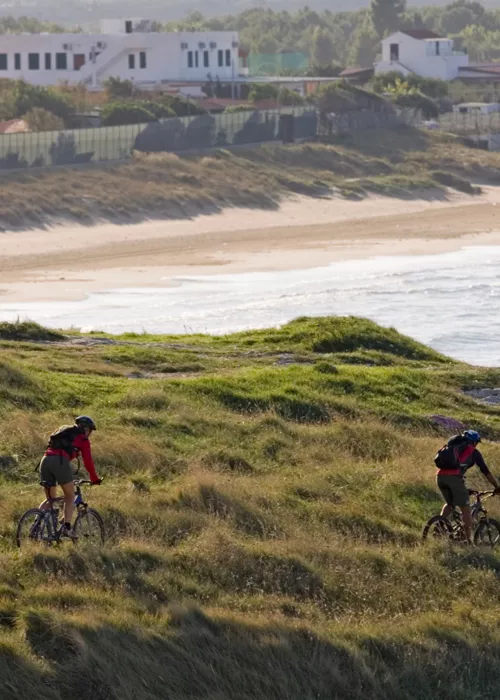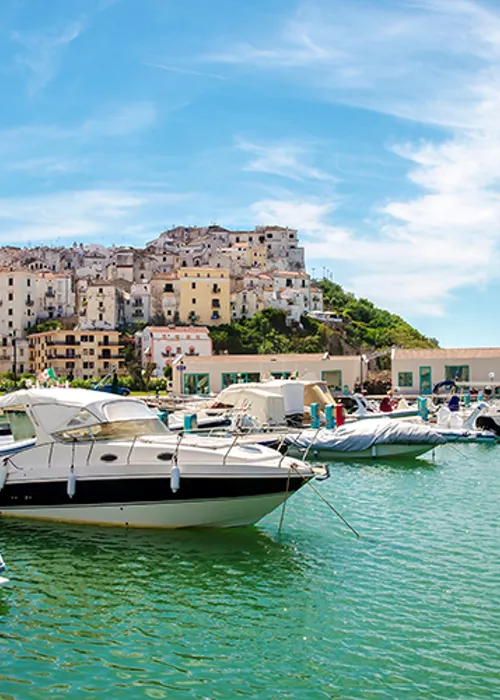Giovinazzo

The first of the five cities on this itinerary is Giovinazzo, which immediately offers us a taste of Apulian Romanesque. The old town centre simply looks like a ship ready to set sail. All you have to do is go to the waterfront and reach the small harbour in front of the town and open your eyes wide to get this impression: from here, the town takes on the appearance of a stone ship sailing out to sea with the cathedral silhouetted against the sky. The effect is due to the peninsula shape of the old town, built on a promontory by the sea from which the 15th-century walls rise, surrounding the medieval centre, which is as intimate as it is graceful and where walking around is as evocative as seeing the waves from the top of the ramparts. All around, the smell of saltiness permeates the air along with that of the small restaurants overlooking the picturesque seaside village. In the area of the old harbour in Piazza Duomo is the iconic 12th-century Cathedral of Santa Maria Assunta. The apse remains of the original Romanesque layout, while almost the entire remainder of the building is affected by the Baroque modifications carried out in the eighteenth century. In contrast, the crypt has remained as it was, supported by 10 columns with unusual Romanesque capitals and 12 pillars protruding from the perimeter walls.
Molfetta

It is said that two exiles from Croatia seeking asylum were so struck by the beauty of the place that they christened it Melphacta (made of honey), from which the name Molfetta, the second town one encounters, is derived. Who knows if the legend is true, but this place certainly isn't lacking in sweetness. All you have to do is go there at sunset, when the old cathedral of San Corrado, one of the few buildings overlooking the sea, is enveloped by a golden light. And so, strolling along the marina with the background of the fishermen's chatter, it is impossible not to entertain a romantic impression of the place. The old town, with its elliptical layout rising on the promontory protecting the port, has its own soul, different from that of the rest of the city. It used to be an island, separated from the rest of the old town by a canal that was later filled in, which is why it is also called the island of Sant'Andrea. Small and cosy, it is ideal for wandering on foot to discover views, balconies with carved grilles, niches, bas-reliefs, loggias and portals, small churches and fountains. Here rises the figure of the Apulian Romanesque-style cathedral with its three pyramidal domes and two tall bell towers, which alone constitute the image that lingers most strongly in the mind of those arriving in Molfetta..
Bisceglie

The next stop is Bisceglie, an agricultural centre overlooking the sea with beautiful beaches all around. In its historical part, the city still shows the lines of Norman architecture, later remodelled by the Aragonese in the 15th century with major fortification works such as the defensive walls. The ancient heart is located close to the port and is easily recognisable, as it is surrounded by walls, with the Swabian Castle – ordered by Frederick II and enlarged by the Angevins – standing out with the Torre Maestra or Norman Tower, the tallest of the remaining four-sided towers and now housing the Ethnographic Museum. The city's main place of worship, in the centre of the old city, is the 11th–13th-century Romanesque cathedral: a three-nave basilica, extensively modified over time following an 18th-century earthquake and the subject of extensive restoration work that restored its Romanesque features to the interior. What is striking is its façade, with its beautiful central Romanesque portal, finely decorated and anticipated by a small portico supported by columns with griffins, which coexists with the Baroque element of the large window.
Trani

With its pink stone cathedral, which for more than eight centuries has seemed suspended between sky and sea, and with the waves of the sea almost crashing against it, Trani is a thunderbolt at first glance. But this is only a taste of things to come. To look at it from the harbour, the town seems to embrace the Adriatic, of which it is not by chance called "the pearl", but to really discover it, one has to penetrate its narrow yet bright, light stone alleys, animated by cafés and small restaurants.
Who knows whether in the 1950s, when the decision was made to demolish the surrounding neighbourhood, anyone could have imagined that this would have made the cathedral's already striking location, isolated and so close to the water, even more special. In addition to its location, it is the almost white pink colour of its stone, a limestone tuff that comes from the town's quarries, that is captivating. On the façade, there is only a small central rose window and three windows; the rest is utterly austere and simple. At the entrance, one is greeted by a double flight of stairs that reveals the history of the building, the construction of which was begun at the end of the 11th century and which actually consists essentially of two overlapping churches: which justifies the imposing overall volume. The lower church is an expansion of the Byzantine S. Maria della Scala built on foundations from the 5th–7th century, while the upper basilica was begun in 1099. Both can be accessed from the façade, under the arch of the lower church and ascending to the upper one via the transverse stairs.
Barletta

When the name Barletta comes to mind, one immediately thinks of the famous historical facts that generations of students have learnt about, namely the heroic events in which 13 valiant Italian knights took part in defending the city against an equal number of French knights (known as the Challenge of Barletta). History buffs will also know that not far from here is the site where the Carthaginian Hannibal's tenacious victory over the Romans took place. In modern times, however, Barletta has not enjoyed great success, suffering above all from its proximity to the more prestigious Trani, which overshadowed its presence. In recent years, however, the wind has changed, so much so that there has been a renewed interest in this city, which has everything it takes to deserve it. First of all, it has a well-kept historic centre, which prides itself on a singular-looking cathedral, the beauty of which lies in its multiformity, the result of the mixture of many styles that have been layered over time in a surprising harmony. It also has a grandiose castle that preserves a centuries-old history, and a picture gallery housed in the splendid historic Palazzo Della Marra, which pays tribute to the famous painter Giuseppe De Nittis, who was born in Barletta but moved to Paris: he is the Italian answer to French Impressionism.


